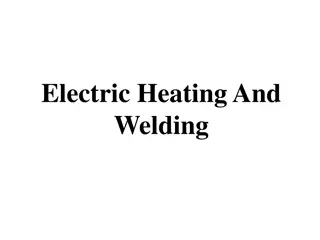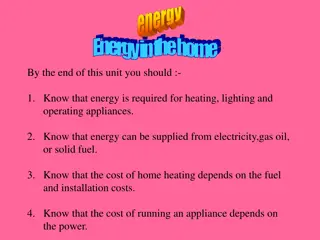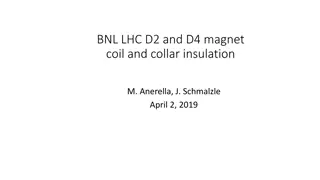
The Role of Wall Insulation to Reduce Heating Costs in 2025
Learn how external wall insulation can drastically reduce your heating bills in 2025. Increase comfort, property value, and help the environment. Find out about materials, costs, and government incentives.nn
Download Presentation

Please find below an Image/Link to download the presentation.
The content on the website is provided AS IS for your information and personal use only. It may not be sold, licensed, or shared on other websites without obtaining consent from the author. Download presentation by click this link. If you encounter any issues during the download, it is possible that the publisher has removed the file from their server.
E N D
Presentation Transcript
The Role of Wall Insulation to Reduce Heating Costs in 2025: What You Want To Know. As 2025 approaches, energy efficiency in homes should get much priority, especially with the increasing scale of home energy costs and environmental pressures that call for reducing the burden of heating costs during cold winter months. Among the most applicable solutions is wall insulation. This article seeks to understand how proper installation leads to significantly reduced heating needs, thereby leaving less energy usage and hence becoming comfortable in a living space. What is Wall Insulation? Wall insulation is only putting materials within the wall of a building to minimise the transfer of heat across the walls. This is an essential stage in keeping the temperature indoors constant, especially during peak heating demand periods in winter. Insulated walls limit the transfer of heat outside hence less consumption of heating products which eventually leads to tremendous cost-cutting measures. How Insulation Works It does this by preventing the flow of heat by creating a blanket between outer and inner air when it s cold to keep the warmth in during winter and not allowing the penetration of hot air during summer months. The degree of resistance to heat flow is known as the R-value, which is why a high R-value indicates greater effectiveness in insulation. Advantages of Wall Insulation in Saving On Costs Reduced Heating Expenses The most direct benefit of wall insulation is that it lowers bills paid for heating. According to different studies, homes with the right insulation can save between 10% and 45% of the annual heating costs. In theory, this may translate to thousands of dollars for the average household over a year.
Improved Comfort Level This insulation gives cost savings, but more importantly, makes the place more comfortable. In homes, insulation prevents cold drafts and hot spots; therefore, living in a more consistent temperature. Property Value Insulation on the walls may increase the value of your house. More energy-efficient houses are attractive to potential buyers and such houses may get sold at more reasonable prices compared to those which are not energy efficient. Environmental Impact Lower energy consumption is achieved using proper insulation as it reduces greenhouse gas emissions. These are also steps toward a sustainable world by reducing the effects of climate change. Long-term effects on heating cost Long-term wall insulation brings so many more effects beyond immediate saving: Less Use of Heating: Improved insulation saves money in utilising fewer heating systems since homeowners can put thermostats to the lowest without loss of comfort. Payback Period: While installation costs can vary depending on the material and size of the house, this payback is usually recovered within five years with lower bills on energy consumed. Government Incentives: Most regions offer tax credits or rebates for energy-efficient home improvements and the choice for insulation becomes an even better investment.
Conclusion With this aim to 2025, one would consider external wall insulation as an important investment for homeowners who want to reduce heating and make homes warmer within the colder months. This investment seems to be a wise decision on the part of any homeowner due to the benefits associated with cutting down energy bills, an increase in the value of the property, and making it environmentally friendly. Once you know which types of insulation exist and what they can do for you, it will be fairly easy to make those kinds of decisions that will lead you to a lot of savings and greener tomorrow. Investing in wall insulation today will return its investment not only immediately in terms of relief of cash but also help save your home s future and the environment as well.






















